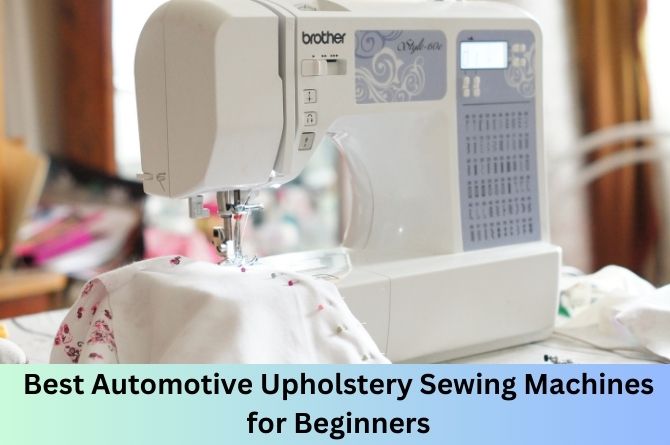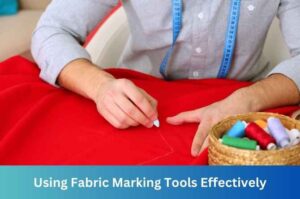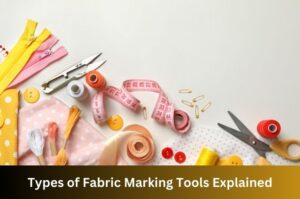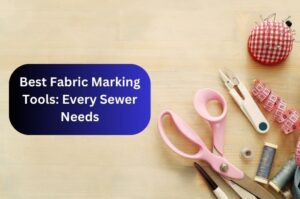All claims are strictly our personal opinion after reviewing each particular products. As an Amazon Associate, we earn from qualifying purchases. Auto upholstery work, often a blend of craftsmanship and precision, requires specialized tools, particularly a good sewing machine. Whether you’re restoring vintage car interiors, crafting customized seats, or simply embarking on a DIY project, choosing the right sewing machine can significantly impact your outcomes.
But what are the best automotive upholstery sewing machines for beginners? This guide will take you through everything you need to know about picking the best beginner sewing machine for auto upholstery.
What is Automotive Upholstery?
Auto upholstery refers to the process of repairing, replacing, or customizing the fabric, leather, or vinyl inside a vehicle. This can include seats, dashboards, door panels, and more.
It’s a specialized field that requires specific tools and skills, including a high-quality sewing machine capable of handling thick materials and intricate patterns.
Why Automotive Upholstery Needs a Specialized Sewing Machine
Unlike everyday sewing tasks, auto upholstery demands a machine with extra power, precision, and adaptability. These machines often need to handle thicker fabrics, such as leather, vinyl, and canvas, while maintaining straight and durable stitches.
A standard home sewing machine is unlikely to hold up in these conditions. Therefore, investing in a sewing machine specifically designed for upholstery is critical.
If you’re new to auto upholstery, you’ll need to focus on machines that can provide industrial strength without being too complex or intimidating to use.
Key Features to Look For in an Automotive Upholstery Sewing Machine
When selecting a sewing machine for automotive upholstery, consider these key features:
Heavy-Duty Construction
Automotive upholstery fabrics are thick and durable, so your sewing machine must be able to handle these materials without struggling.
Powerful Motor
A strong motor ensures that the machine can sew through multiple layers of fabric and handle tough materials like leather or vinyl.
Adjustable Presser Feet
Different types of presser feet are needed for various sewing tasks. A machine with adjustable presser feet allows you to switch between feet based on your needs.
High-Quality Needle System
For sewing through dense fabrics, a machine with a high-quality needle system is essential.
Wide Stitch Selection
Automotive upholstery often requires a variety of stitch types, so having a machine with multiple stitch options is beneficial.
Large Sewing Table
A spacious sewing table provides ample room to maneuver large pieces of fabric, making your work easier and more precise.
Built-in Lighting
Good lighting is crucial for seeing your work clearly, especially when dealing with intricate details.
Ease of Threading
A user-friendly threading system can save you time and frustration, especially if you’re new to sewing.
Durability and Reliability
A durable machine will last longer and require fewer repairs, making it a better investment.
Affordability
As a beginner, you may not want to invest in the most expensive machine right away. Look for a balance between cost and features.
Top Sewing Machines for Automotive Upholstery Beginners
Singer 4423 Heavy Duty
- Heavy-duty home sewing machine
- 23 built-in stitches (basic, decorative, buttonhole)
- 60% stronger motor
- 1,100 stitches per minute
- Automatic Needle Threader
- Stainless Steel Bedplate
- Adjustable Presser Foot
- Ideal for beginners and intermediate users sewing thick fabrics like canvas and upholstery
- Great price point for beginners.
- Up to 1,100 stitches per minute.
- Heavy-duty frame ensures stability.
- Ideal for a wide range of projects.
- Can be louder compared to other models.
- Some users may want more advanced stitch types.
Juki DDL-8700
- Industrial straight stitch sewing machine
- Single straight stitch only
- High-speed industrial-grade motor
- 5,500 stitches per minute
- Adjustable Stitch Length
- Large Workspace
- Ideal for professional and industrial sewing tasks, particularly on heavy fabrics
- Fast performance for high-volume sewing.
- Designed for continuous use and heavy fabrics.
- Minimal vibration for precise stitching.
- Limited to straight stitching.
- Higher initial cost for beginners.
Consew 206RB-5 Walking Foot
- Industrial walking foot sewing machine
- Straight stitch with adjustable stitch length and width
- Walking foot for even fabric feeding
- Large Workspace
- Heavy-Duty Construction
- Adjustable Stitch Length and Width
- Ideal for professional and industrial sewing tasks, particularly on heavy fabrics
- Built to last through tough tasks.
- Designed for heavy-duty upholstery and leatherwork.
- Excellent stitch control.
- Higher cost than basic machines.
- Not ideal for those completely new to sewing.
Singer 191D-30
- Industrial sewing machine
- Straight stitch with adjustable stitch length
- 4,000 stitches per minute
- Adjustable Stitch Length
- Industrial-Grade Motor
- Heavy-Duty Construction
- Designed for commercial and high-volume sewing applications, particularly in upholstery
- High-speed sewing for large projects.
- Industrial-grade materials ensure longevity.
- Low vibration and noise.
- Like other industrial machines, it lacks decorative stitch options.
- Requires assembly and may need professional setup.
Sailrite Ultrafeed LSZ-1
- Portable heavy-duty sewing machine
- Straight and zigzag stitches
- Walking Foot for Heavy Fabrics
- Zigzag and Straight Stitch Capability
- Portable with a Durable Carrying Case
- Extra-High Presser Foot Lift
- Suitable for upholstery, marine fabrics, leather, and heavy canvas sewing
- Easily transportable for on-the-go sewing.
- Perfect for upholstery and marine sewing.
- Offers both straight and zigzag stitches.
- Slightly complex for beginners.
- Higher cost due to specialized features.
Juki DU-1181N
- Industrial top and bottom feed sewing machine
- Single straight stitch with adjustable length
- Top and bottom feed for consistent stitching on heavy materials
- 2,000 stitches per minute
- Adjustable Stitch Length and Presser Foot Pressure
- Heavy-Duty Motor
- Designed for heavy-duty industrial sewing, especially for upholstery and leatherwork
- Even handling of heavy materials.
- Industrial-grade durability and performance.
- Adjustable stitch settings.
- Requires a dedicated workspace.
- Higher initial investment.
Janome HD1000
- Heavy-duty home sewing machine
- 14 built-in stitches (basic, decorative, utility)
- Heavy-Duty Aluminum body
- Free Arm for Circular Sewing
- Built-In Needle Threader
- Suitable for home and small business upholstery work, as well as general heavy-duty sewing
- Long-lasting build with a heavy-duty frame.
- Simple controls ideal for beginners.
- Can handle a wide range of fabrics and projects.
- Only 14 stitches, which may limit creativity.
- Requires adjustment by hand.
Brother ST371HD
- Heavy-duty home sewing machine
- 37 built-in stitches (utility, decorative, heirloom)
- Heavy-duty metal frame
- Automatic Needle Threader
- Multiple Presser Feet Included
- Perfect for beginners working with thick materials like denim, canvas, and leather
- Budget-friendly option for beginners.
- Wide range of stitches for different projects.
- Easy to use with automatic features.
- Slower compared to industrial models.
- Some parts are plastic, which may reduce durability.
Singer CG590
- Commercial-grade sewing machine
- 18 built-in stitches (basic, decorative, utility)
- 1,100 stitches per minute
- Commercial-Grade Motor
- Adjustable Stitch Length and Width
- Automatic Needle Threader
- Suitable for commercial and heavy-duty sewing tasks, especially on tough fabrics
- 1,100 stitches per minute for efficient work.
- Can handle thick fabrics and multiple layers.
- Built to last through tough projects.
- Limited decorative stitches.
- Can be noisy during operation.
Juki TL-2010Q
- Portable heavy-duty sewing machine
- Single straight stitch
- 1,500 stitches per minute
- Automatic Thread Cutter
- Adjustable Presser Foot Pressure
- Lightweight and Portable
- Ideal for quilting, upholstery, and heavy-duty sewing projects requiring portability
- Lightweight for easy transport.
- Perfect for high-volume sewing.
- Convenient thread cutting and tension adjustment.
- On the expensive side for a portable machine.
- Limited to straight stitching.
Final Thoughts
Sewing automotive upholstery may seem intimidating for beginners, but with the right sewing machine and a bit of practice, you’ll be creating professional-looking projects in no time.
The key is to choose a machine that offers power, durability, and user-friendly features. Whether you opt for a tried-and-true model like the Singer Heavy Duty 4423, or go for a more advanced machine like the Juki DDL-8700, your investment in a reliable sewing machine will pay off in the long run.
Pair that machine with the right accessories and plenty of patience, and you’ll be well on your way to mastering the art of auto upholstery sewing.
Remember, start slow, be consistent, and most importantly, enjoy the process of creating something with your own hands. Whether you’re a hobbyist or planning to turn your skills into a professional endeavor, mastering auto upholstery can be incredibly rewarding.




